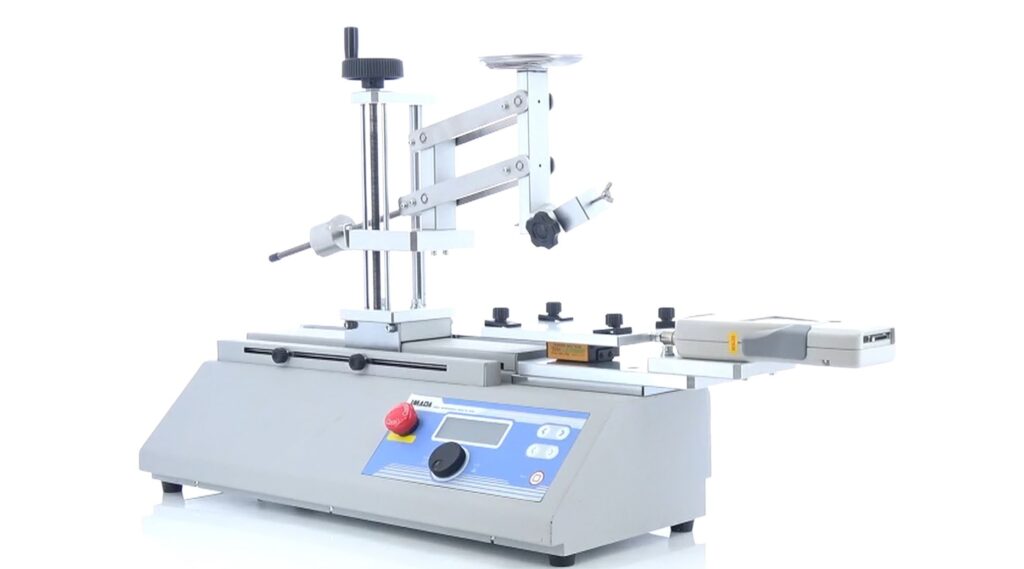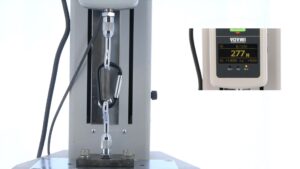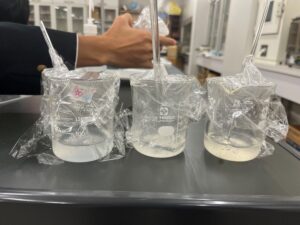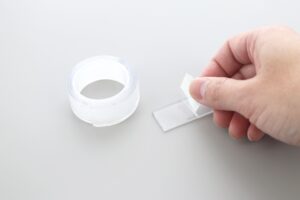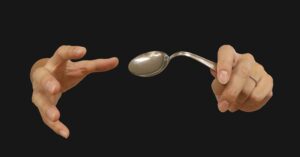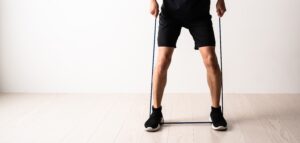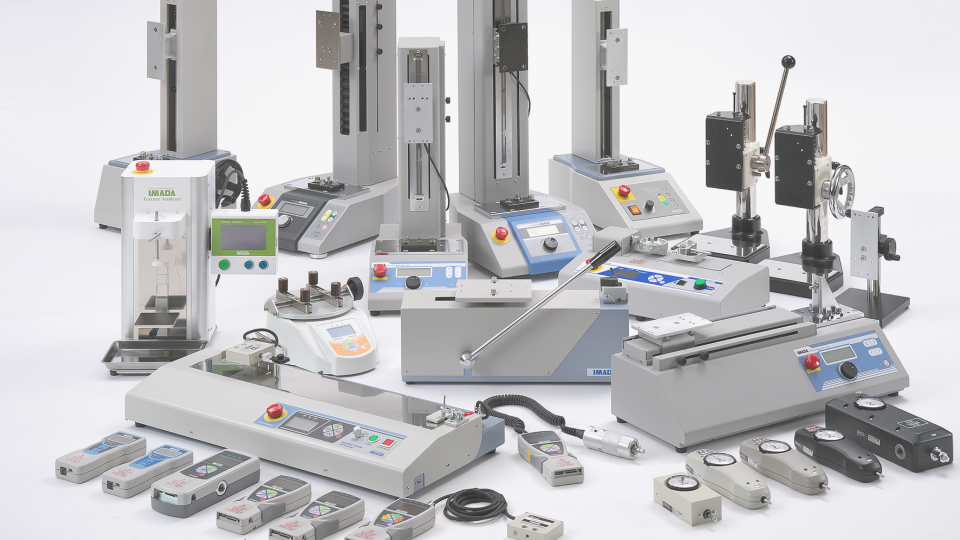How do you enjoy the early autumn days? Autumn is synonymous with “autumn of sports”, “autumn of reading”, “autumn of art”, and “autumn of appetite” in many parts of the world. With the pleasant weather, it is definitely the perfect time to work on something.
In the last issue of “Laboratory Report”, we introduced the secret of delicious, whipped cream to make your home time more enjoyable. In this issue, we would like to focus on major writing instruments that are suitable for “Autumn of Arts”.
They say “When writing is comfortable, the brush dances”
These days, many people write on computers and cell phones, so when it comes time to use a writing instrument, I doubt I am the only one who feel nervous and my writing slipping.
For those who share the same feeling as I do, a comfortable writing instrument is a reassuring friend. If you have a smooth writing instrument, your writing will go faster, won’t it?
When you write, what is your favorite writing instrument? There are many types of writing instruments such as ballpoint pens, ink pens, marker, mechanical pens, pencils, and brushes. With the spread of remote work, many new types of writing instruments have been newly introduced to the market.
There are many factors that determine the type of writing instrument you choose, but the most important factor is writing comfort. Many factors affect the writing comfort, such as ease of grip, performance, ink type, and core hardness. There are too many and perhaps some feel overwhelming.
Do not worry! We scientifically analyzes the friction between typical writing instruments and paper to find out the relationship between writing comfort and writing.
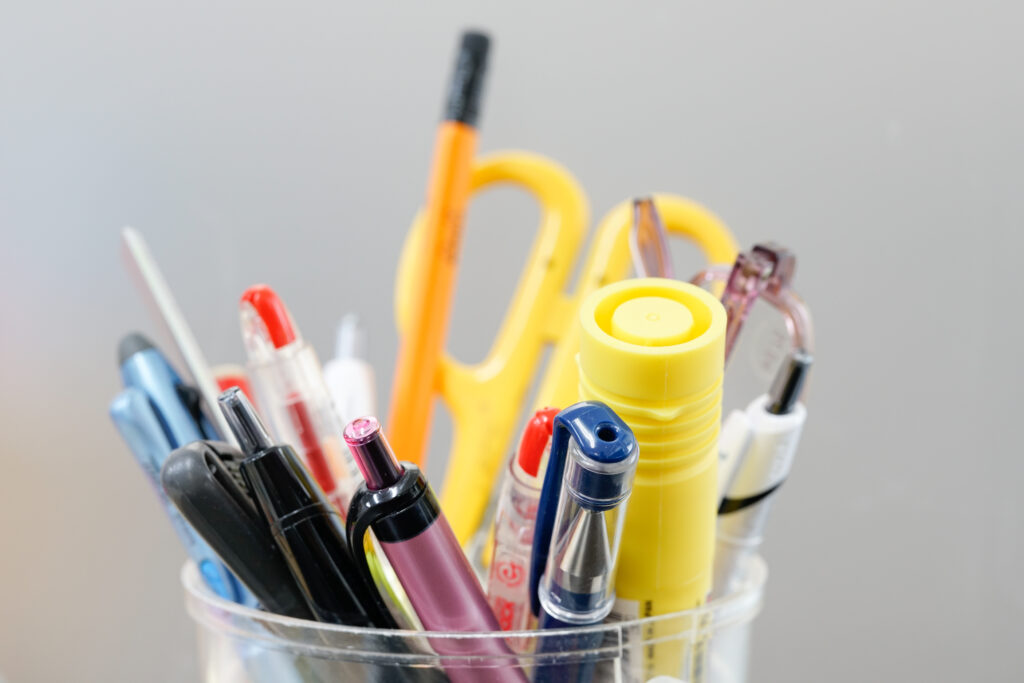
The relationship between writing comfort and friction
Most of you would agree that there are times when the writing feels as if it is sliding, and then there are times when it feels as if it is firmly engraved. The reason for these sensations is the frictional force created when the tip of the writing instrument (core, ball, etc.) comes in contact with the paper and moves.
Therefore, by scientifically measuring the friction when the writing instrument moves across the paper, the secret of writing comfort could be revealed. Imada aims to prove the difference in writing comfort based on the friction caused by different writing instruments.
Time to prepare for the experiment!
Writing Instrument / Measuring Equipment
Writing instrument (all are commercially available products)
• Ballpoint pen (Cone tip type, Needle tip type, Synergy tip type)
• Erasable ballpoint pens
• Marker
• Pencil (hardness HB)
• Mechanical pencil (hardness HB)
• Plain white notebook
Measuring Equipment (IMADA measurement instruments)
Preparation for the Experiment
– Code the writing instruments
The above writing instruments are coded as follows.
- A. Ballpoint pen Cone tip type
- B. Ballpoint pen Needle tip type
- C. Ballpoint pen Synergy tip type
- D. Erasable ballpoint pens
- E. Marker
- F. Mechanical Pencil (hardness HB)
- G. Pencil (hardness HB)
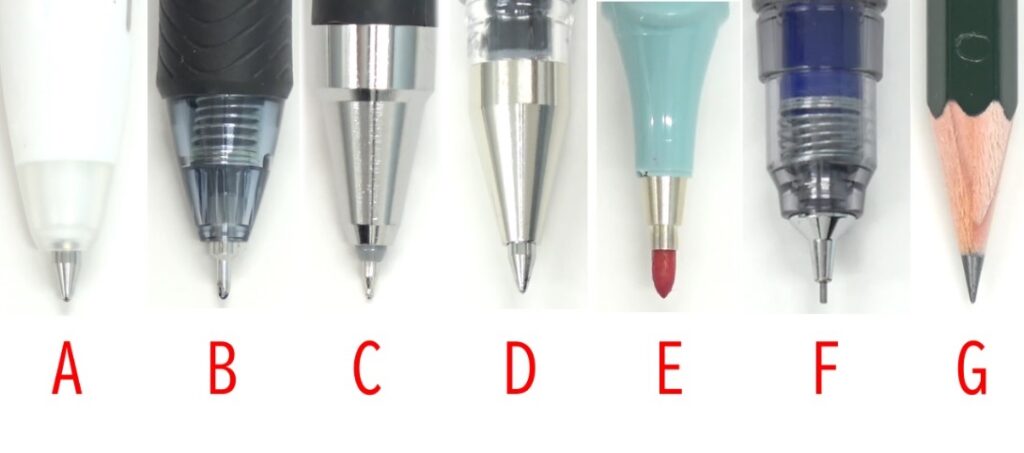
– Set up the measuring equipment
1. Secure each writing instrument sample to the measuring instrument with the attachment
2. In order to simulate the normal writing condition, the writing instrument is tilted at an angle of 60 degrees, the pressure is applied with a 102g weight that lightly touches the paper, and the speed is set to 300mm/min.
3. Under the exact same conditions, the above seven types of writing instruments are moved 70 mm from left and right (= writing), and the friction during the movement are measured.
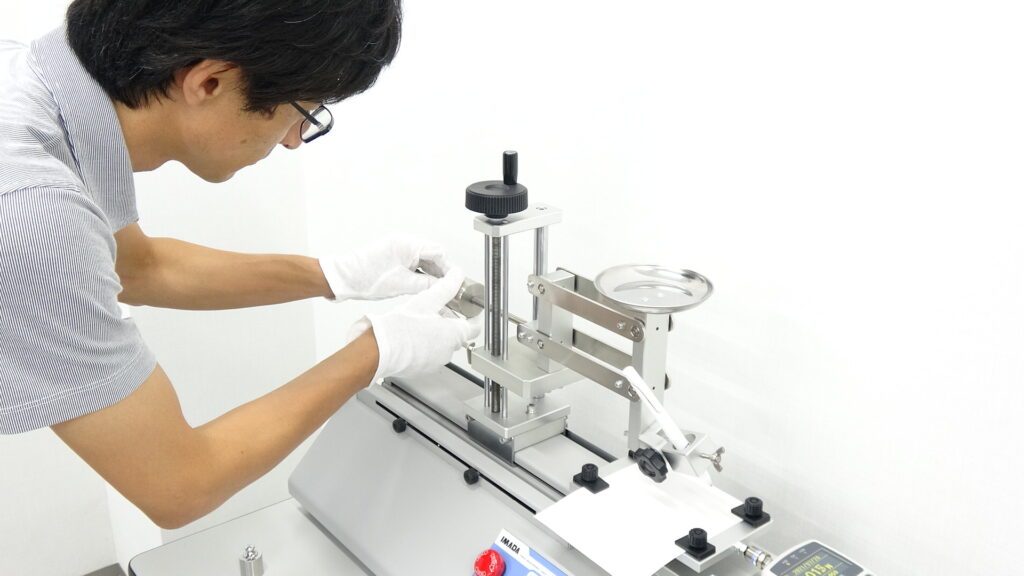
Comparison by Ballpoint pen types
Firstly, we compare the four types of ballpoint pens.
Comparison A, B, C, and D
• A (Black 一)Ballpoint Pen Cone tip type
• B (Red 一)Ballpoint Pen Needle tip type
• C (Green 一)Ballpoint Pen Synergy tip type
• D (Blue 一)Erasable Ballpoint pen type

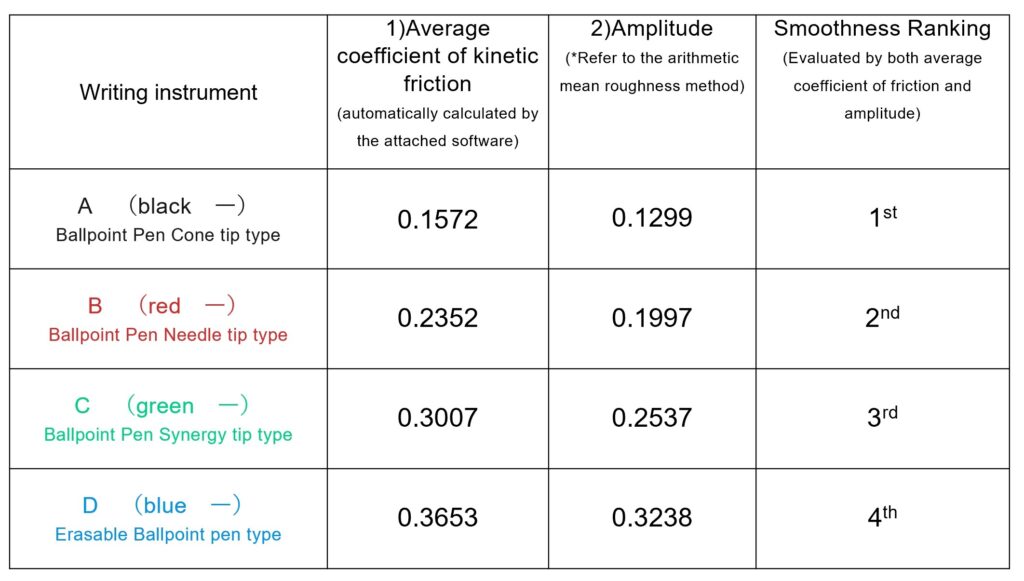
This is how the above graph can read. The smaller the Force on the Y-axis (Vertical axis: Force (N)) (in other words, the smaller the average coefficient of kinetic friction which calculated based on the force), and at the same time, the smaller the amplitude (i.e., the size of the line touching the top and bottom of each color), the smoother the writing performance of the respected ballpoint pen type.
The results show that the Cone tip ballpoint pen (black line) is the smoothest, followed by Needle tip ballpoint pen (red line), Synergy tip ballpoint pen (green line), and Erasable ballpoint pen (blue line).
In actual writing situations, however, the combination of writing tip and ink affects the friction, so please understand the result can’t be simply generalized as if the Cone tip type is not necessarily the smoothest at any condition.
(*) The amplitude was calculated using the arithmetic mean roughness method as a reference. The arithmetic mean roughness (Ra) represents the average distance (Ra) from the reference value, using the average value of all measurements as the reference value. The lower this value is, the smaller the amplitude and the less unevenness, suggesting a smooth writing surface.
Comparison by writing instruments types
Secondly, we compare the four types of writing instruments.
Comparison of A, E, F, and G
• A (Black 一)Ballpoint pen Cone tip type
• E (Red 一)Marker
• F (Green 一)Mechanical pencil( Hardness HB)
• G (Blue 一)Pencil( Hardness HB)
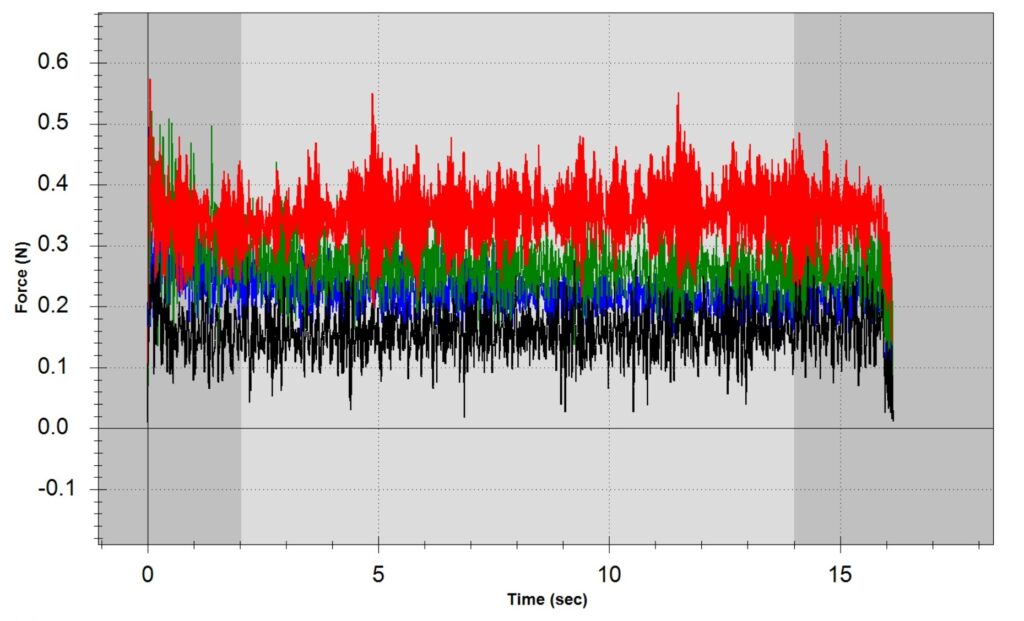

It is the same way to read the graphs. The results show that the ballpoint pen cone tip type (black line) is the smoothest, followed by the pencil (blue line), mechanical pencil (green line), and marker (red line), with the smoothness decreasing in that order.
Since we compared the smoothest cone-cheap type among the four different tip types of ballpoint pens, please understand that we cannot say that ballpoint pens are the smoothest in a comparison among general writing instruments.
*Supplement: The test pattern for each writing instrument is as follows
- A.Ballpoint pen Cone tip type
The cone tip is the most common type of ballpoint pen, and is conical in shape, making it stable enough to withstand high writing pressure.
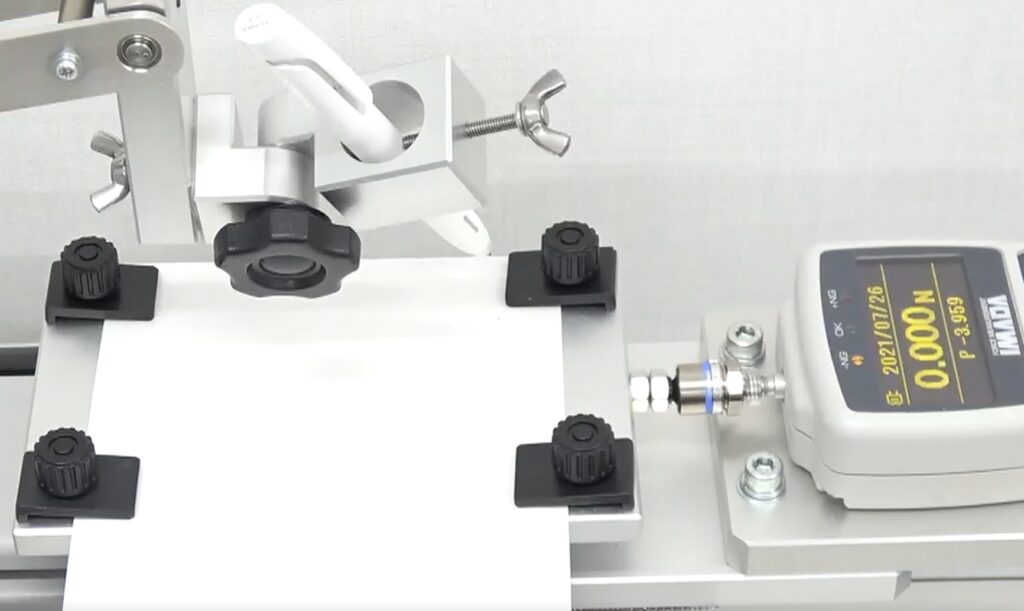
【Reference】Click below for the video for Ballpoint pen Cone tip type
- B.Ballpoint pen Needle tip type
The needle tip is the most common type of ballpoint pen, and are conical in shape, making them stable enough to withstand high writing pressure.
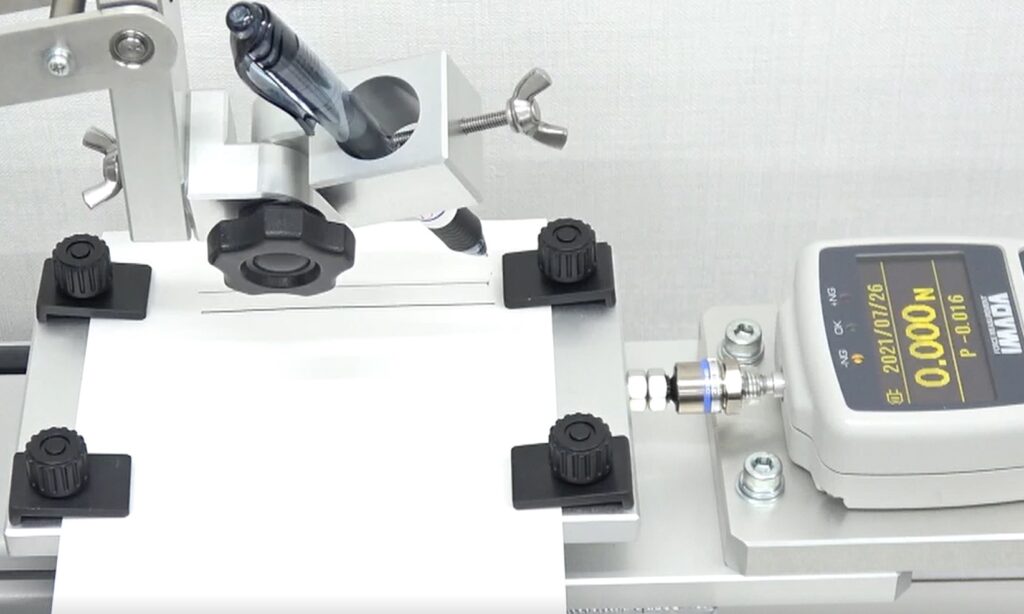
【Reference】Click below for the video for Ballpoint pen Needle tip type
- C. Ballpoint pen Synergy tip type
Synergy tip is a newly developed type by PILOT, which is a combination of a cone and a needle.
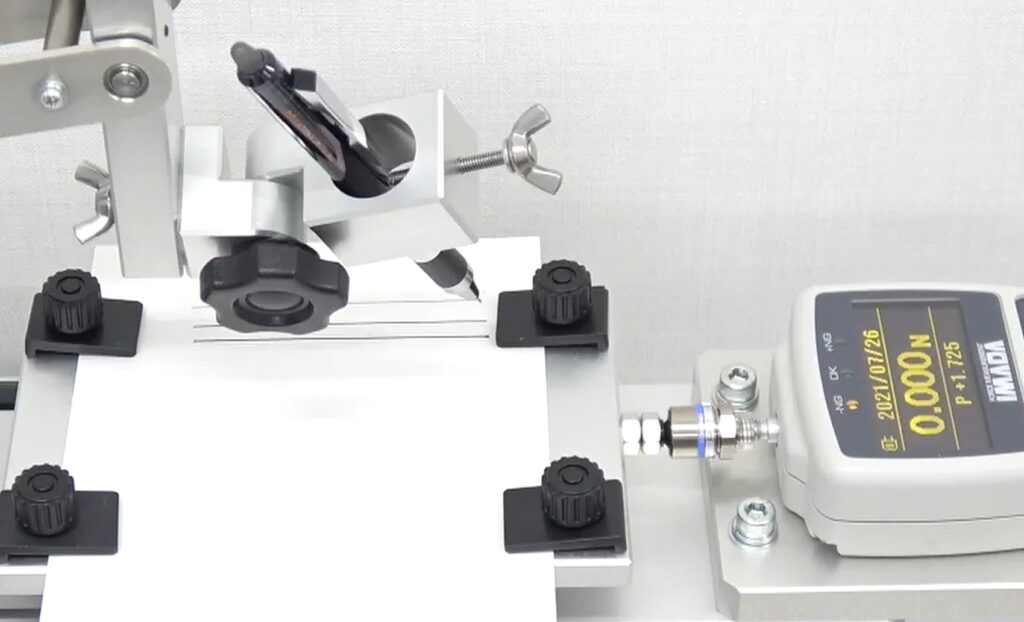
【Reference】Click below for the video for Ballpoint pen Synergy tip type
- D. Erasable Ballpoint pen
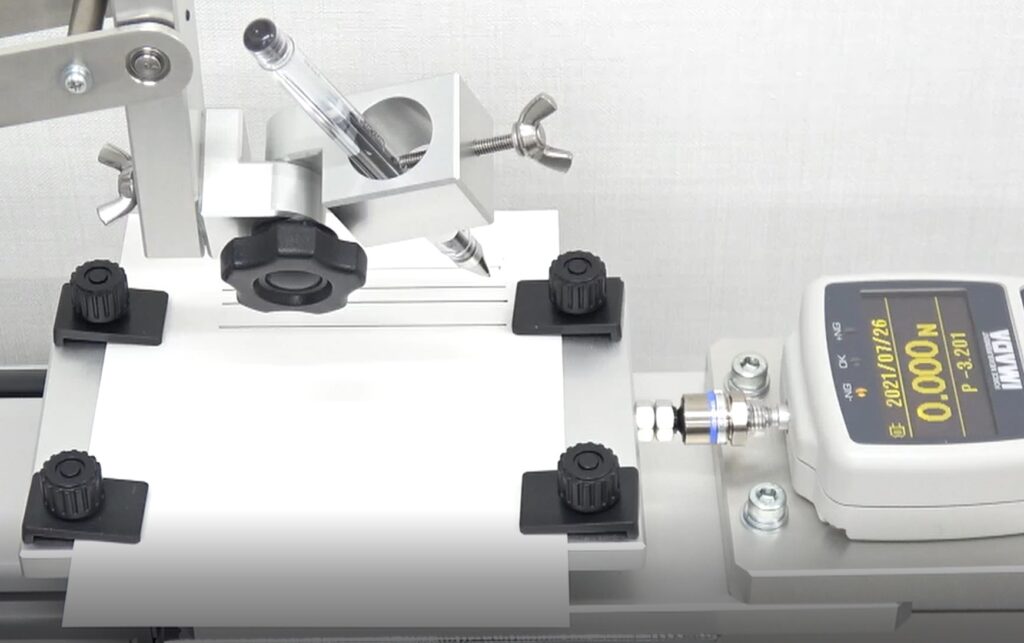
【Reference】Click below for the video for Erasable ballpoint pen
- E. Marker
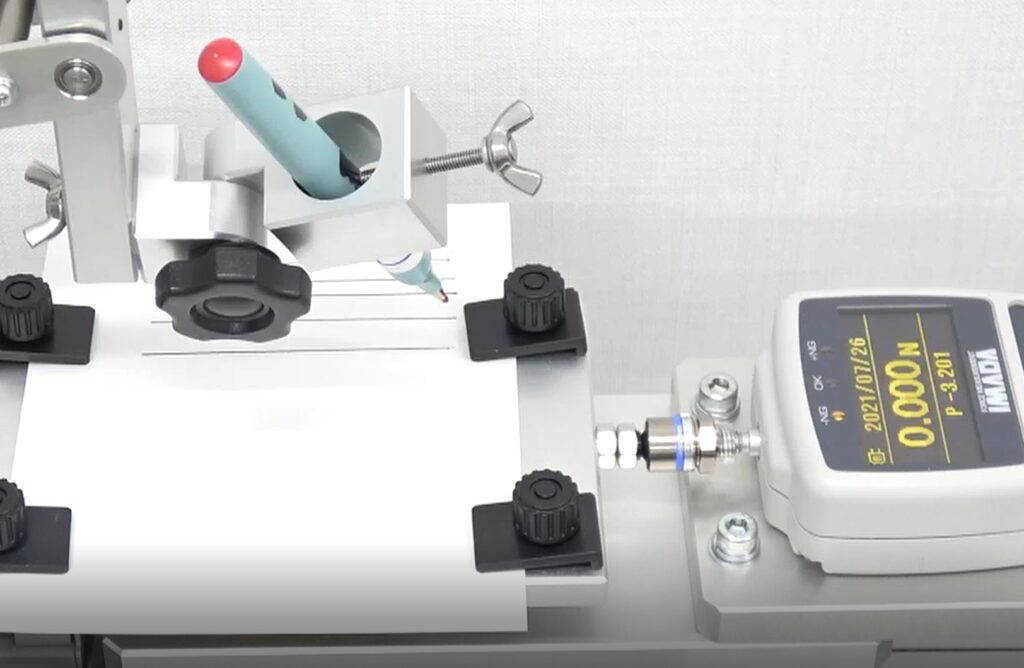
【Reference】Click below for the video for Marker
- F. Mechanical pencil (Hardness HB)
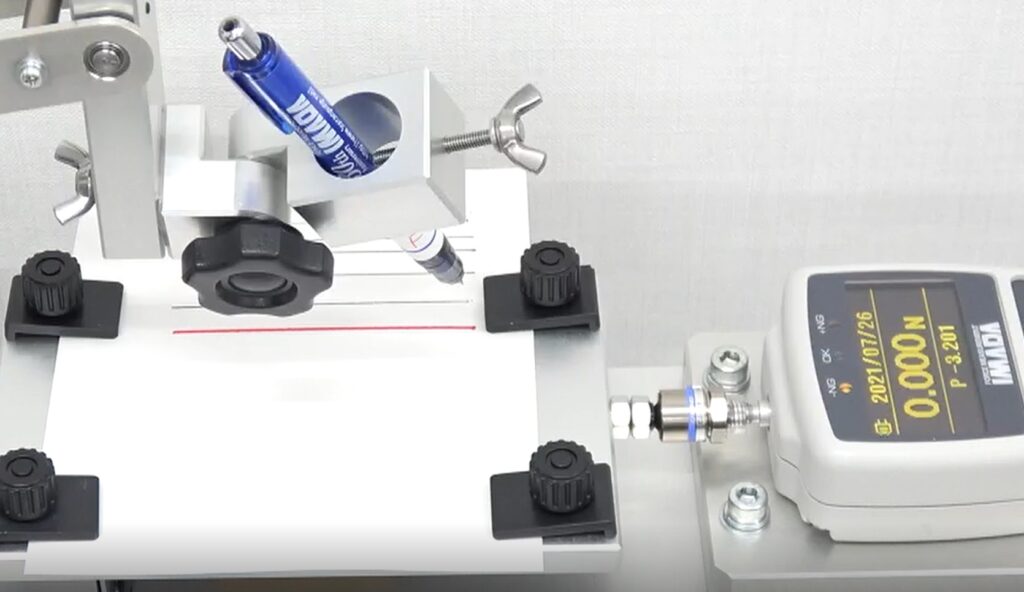
【Reference】Click below for the video for Mechanical pencil (HB)
- G. Pencil (Hardness HB)
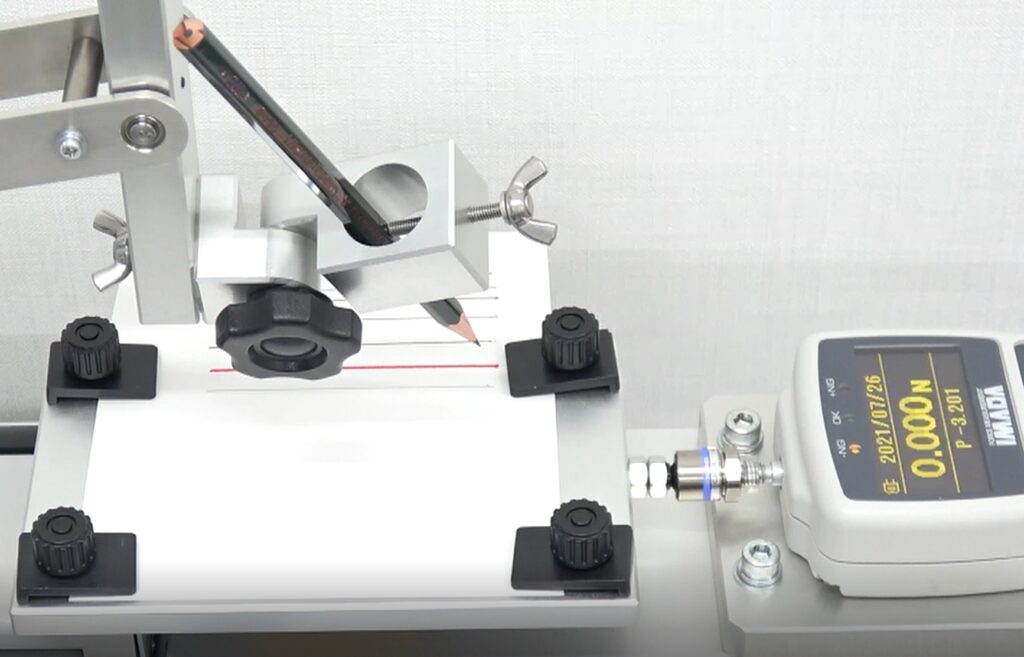
【Reference】Click below for the video for Pencil (HB)
Sneak preview of the next issue and beyond
What did you think? Some may think “That makes sense,” while others may be urged to try one of these out soon. We hope you find this article be of any help in choosing a writing instrument. We even hope that will enrich your writing on a brisk autumn day.
In the “Force Channel”, we continue to challenge ourselves to measure anything and everything. If you have an idea, please let us know. Doesn’t matter if it is a familiar object or a difficult sample! We will make full use of our measurement technology to provide you with astonishing results.
We are anxious to hear from you.
Superstition of the Month (?) “Knowing gravity makes my brushes rustle in the long autumn nights.
※Sign pen is a registered product of Pentel Co.,Ltd. In this paper, it is used as a generic name for felt-tip pens.

